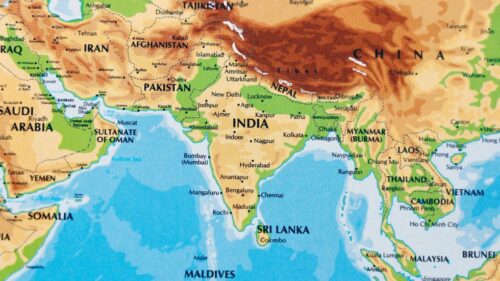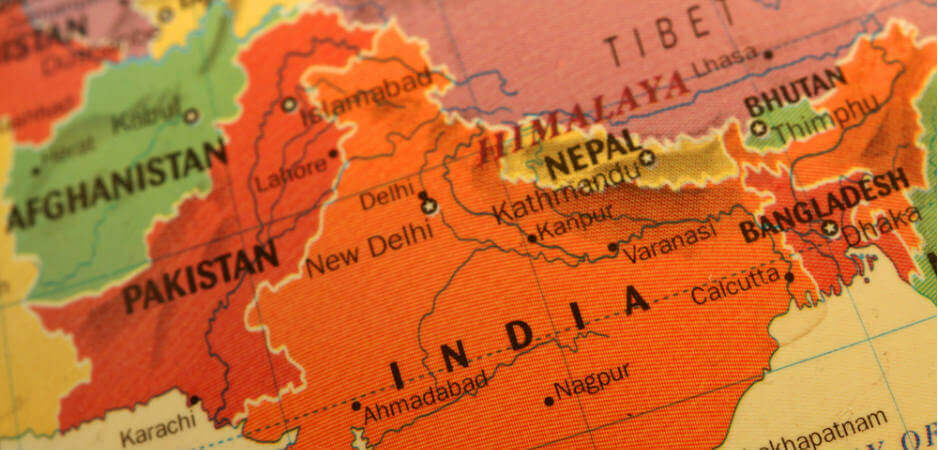US President Donald Trump often launches diplomatic initiatives without fully considering the consequences. He is quick to claim credit for successes, whether or not that is timely or deserved. Though not necessarily acting out of malice, he tends to exaggerate his peace overtures and frequently reverses course without concern for credibility or long-term political fallout.
As the head of the world’s most powerful country, Trump inevitably commands global attention. Foreign governments often feel compelled to accommodate his unpredictability, particularly because he acts on ego and impulse, making snap decisions in an attempt to demonstrate his influence. He calls this behavior his version of the “art of the deal.”
Trump blindsided India with his response to the military standoff with Pakistan in April 2025, which was triggered by a deadly terrorist attack in Pahalgam, Jammu and Kashmir, on April 22. The attack, carried out by terrorists linked to Pakistan-based groups, occurred during US Vice President J.D. Vance’s official visit to New Delhi. Islamabad has repeatedly timed such attacks to coincide with high-profile US diplomatic visits, a tactic aimed at internationalizing the Kashmir issue. Pakistani officials know that Washington has historically tolerated these provocations — even when they endanger US personnel or broader strategic interests.
Given Trump’s prior hardline rhetoric against Islamic extremism — and similar positions held by Vance and Director of National Intelligence Tulsi Gabbard — his refusal to explicitly call out Pakistan after the Pahalgam attack appeared inconsistent. Although the US, along with several other countries, condemned the violence, none named Pakistan as the perpetrator. From India’s perspective, these generalized condemnations lacked sincerity and failed to address the underlying state sponsorship of terrorism.
The international community avoided direct confrontation with Pakistan
The United Nations Security Council (UNSC), where Pakistan held a rotating seat in early 2025, also avoided naming Pakistan in its official statement. Instead, the Council urged member states to hold “perpetrators, organizers, financiers, and sponsors” of terrorism accountable and to cooperate with relevant national authorities — language that implicitly referred to Pakistan but allowed it plausible deniability.
The Group of Seven (G7) statement added to India’s frustration. Several G7 countries, including the US, Japan, and Australia, are part of the Quadrilateral Security Dialogue (Quad), while India maintains close strategic partnerships with others, such as France. However, the G7 statement grouped India and Pakistan together, calling on both sides to exercise restraint, de-escalate tensions, and engage in dialogue. The US reportedly pushed for language emphasizing de-escalation while sidestepping the core issue of cross-border terrorism. The UK — historically protective of Pakistan in multilateral forums — likely influenced this wording. Though the G7 condemned the Pahalgam attack, its failure to assign responsibility angered Indian officials.
From India’s standpoint, such calls for dialogue are misplaced. Kashmir is a part of India. Yet New Delhi has pursued bilateral diplomacy with Islamabad in the past to ahieve peace, most notably through the composite dialogue process that collapsed after the Pakistan-backed 2008 Mumbai Islamist terror attacks. While India has periodically resumed talks — such as in 2011 and briefly in 2015 — further terror strikes have consistently derailed engagement. Meanwhile, the US and its G7 partners have often responded to terrorism in the Middle East and Africa with military force, raising questions about their moral consistency when urging restraint in South Asia.
Trump’s premature actions damaged trust and exposed asymmetries in the India–US relationship
The US reaction to the April 2025 India–Pakistan crisis left Indian policymakers puzzled and concerned about the reliability of their strategic partner. After the February 2019 Pulwama attack, Trump affirmed India’s right to self-defense. This time, however, his administration initially stayed on the sidelines. In remarks to reporters in April, Vance said, “We’re not going to get involved in the middle of a war that’s fundamentally none of our business,” adding that the US would support de-escalation but had no authority to dictate terms.
India retaliated massively but responsibly to Pakistan’s terror attack. From May 7 to May 10, Inda followed a policy of calculated and graded escalation. The Government of India agreed to a ceasefire in response to a request from the Pakistani Director General of Military Operations (DGMO) after achieving its key aims. By this time, the Indian Armed Forces had destroyed 11 Pakistani military facilities and valuable hardware. India had sent the message to Pakistan that terror no longer pays.
Trump has repeatedly claimed credit for the May 10 ceasefire, embarrassing Indian officials unnecessarily. India already had a plan for phased de-escalation after achieving its military goals. In the first strike, India deliberately limited its retaliatory strikes to terrorist infrastructure in Pakistan-administered territory, avoiding military installations to give Islamabad a face-saving off-ramp. Only when Pakistan responded with drone, missile and air strikes on Indian military as well as civilian targets did India hit Pakistani military targets. Even while hitting these targets, India constantly signalled it was willing to de-escalate. India’s message to Pakistan was clear: the Indian Armed Forces would henceforth respond to terrorism by striking terrorist assets in Pakistani territory and escalate if necessary regardless of Pakistan’s nuclear sabre-rattling.
Indian Prime Minister Narendra Modi and senior Indian officials publicly rejected Trump’s narrative that the US had brokered peace. Modi reiterated that the ceasefire had been requested by Pakistan through its DGMO, and not orchestrated by any third party. Nevertheless, Trump continued to portray himself as the peacemaker. He equated both countries’ actions, offered to mediate the Kashmir dispute — contradicting the bilateral framework of the 1972 Simla Agreement — and claimed he threatened both sides with trade penalties, while promising enhanced trade incentives if they complied with the ceasefire.
Trump’s trade threat was ill-conceived. In 2024, US–Pakistan trade totaled just $7.3 bill, compared to $129.2 billion with India. This disparity rendered any trade ultimatum aimed at Islamabad largely symbolic and ineffective. Trump was really targeting New Delhi. Indian officials took note — if Trump could casually weaponize trade, could he just as easily use defense cooperation or intelligence-sharing as leverage in future disagreements?
Further irritation followed during Trump’s May 13 visit to Riyadh, where he made offhand remarks about preventing a nuclear exchange between India and Pakistan, invoked the specter of millions of deaths, and praised Secretary of State Marco Rubio for supposedly brokering the ceasefire. He even joked about getting both sides to sit down for dinner — a tone that many in India found dismissive and condescending.
On June 18, Trump met Pakistan Army Chief General Asim Munir for a closed-door lunch. After the short conflict, Munir had become a field marshal which made him the de facto ruler of Pakistan. Geopolitical analysts believe that Trump is creating an axis against Shia Iran by wooing nuclear-armed Sunni Pakistan, the world’s only Islamic nuclear power. It is now clear that Trump is ignoring Indian concerns about Pakistan using terror as an instrument of state policy. For now, Trump seems to have little use for India.
The time has come for Indian policymakers to recalibrate their approach to managing relations with the US. Some degree of visible pushback — rather than quiet compliance — is the need of the hour.
The views expressed in this article are the author’s own and do not necessarily reflect Fair Observer’s editorial policy.
Support Fair Observer
We rely on your support for our independence, diversity and quality.
For more than 10 years, Fair Observer has been free, fair and independent. No billionaire owns us, no advertisers control us. We are a reader-supported nonprofit. Unlike many other publications, we keep our content free for readers regardless of where they live or whether they can afford to pay. We have no paywalls and no ads.
In the post-truth era of fake news, echo chambers and filter bubbles, we publish a plurality of perspectives from around the world. Anyone can publish with us, but everyone goes through a rigorous editorial process. So, you get fact-checked, well-reasoned content instead of noise.
We publish 3,000+ voices from 90+ countries. We also conduct education and training programs
on subjects ranging from digital media and journalism to writing and critical thinking. This
doesn’t come cheap. Servers, editors, trainers and web developers cost
money.
Please consider supporting us on a regular basis as a recurring donor or a
sustaining member.
Will you support FO’s journalism?
We rely on your support for our independence, diversity and quality.








Comment